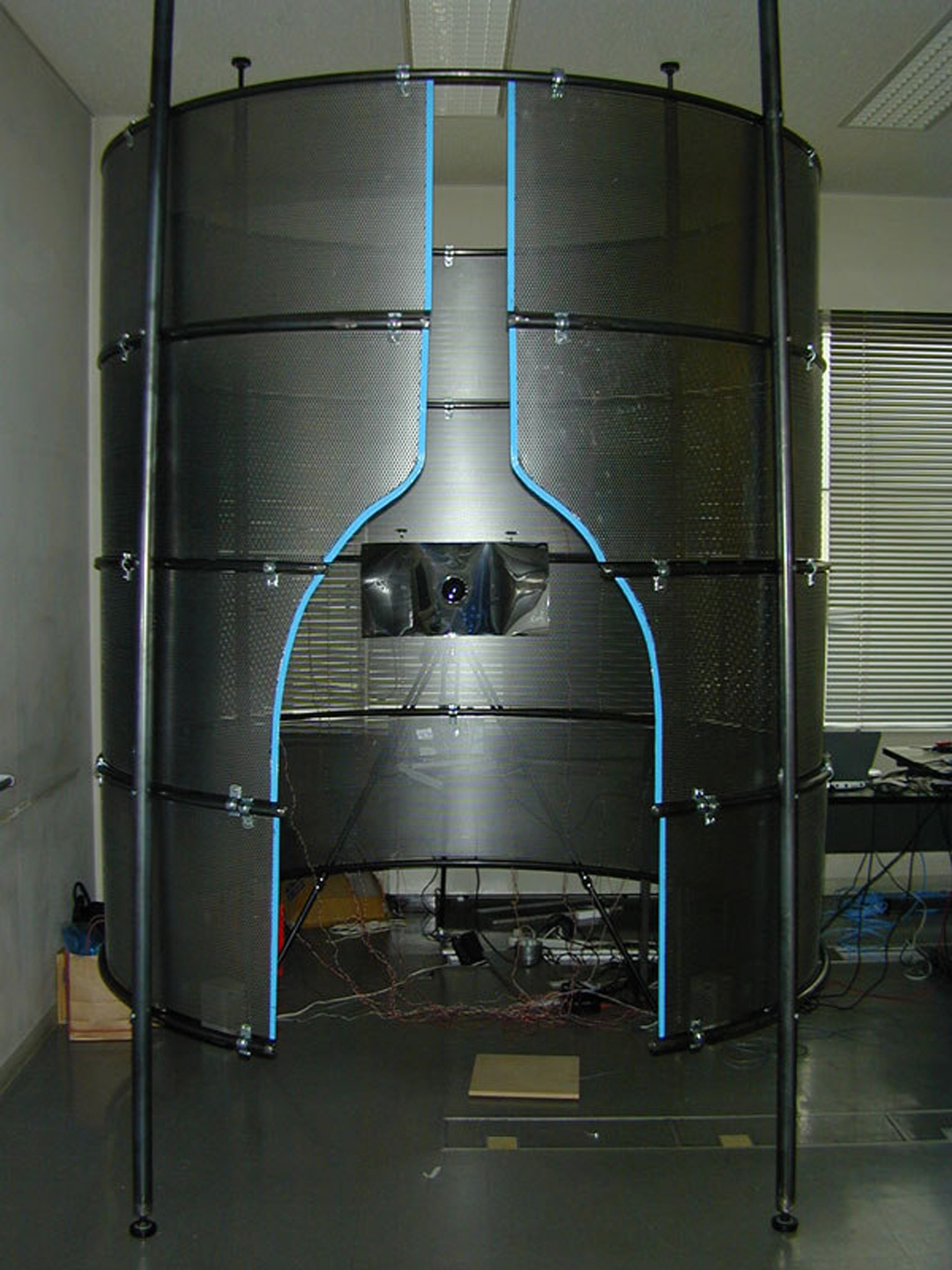“atMOS – Self Packaging Movie” by Katobe, Tokuhisa and Inakage
Conference:
Experience Type(s):
E-Tech Type(s):
Entry Number: 03
Title:
- atMOS - Self Packaging Movie
Organizer(s)/Presenter(s):
Project Affiliation:
- Keio University
Description:
Abstract
“atMOS” is a location based entertainment under the concept of a “Self Packaged Movie”. The player makes short movie clip (like a self promotion video) that the user can trade with others on a 3rd generation mobile phone, by using a system that senses body movements and converts them into sound and video.
1 Introduction
Preceding technologies have allowed users to control motion picture, sound, and lights with motion sensing. However, many were far too complex and unintuitive for a casual user, only worked under set conditions which did not allow maximum freedom for creativity, and lastly, did not produce content in a mobile form. Applications in recent years have been concentrated in location based entertainment such as dance games and sound games, but due to the nature of these games the content is repetitious, and therefore have very limited replay value. Furthermore, these games were on location only, meaning the experience could not be shared unless the participants were on location.
On a different note, there have been a rising trend of sharing still pictures, as can be seen with 3rd generation mobile phones with built in digital cameras. Not only do these mobile phones allow sending and receiving digital pictures, but also allows for the user to alter his/her image through means of downloadable frames and filters and effects. The underlying intent has surpassed the original concept of transferring an accurate picture of the subject, and is entering the realm of self expression and although very limited, artistic creativity.
atMOS aims to combine these two technologies to effectively produce a new form of entertainment and self expression. The interface has been built transparent to the user so as to encourage a more natural form of interaction. There is also no set scenario that the user has to move to because the music and video is generated as the user moves. To make the experience of the interaction easy to understand, atMOS provides constant realtime feedback of the resulting audio and video. Because the cause/effect is easy to understand, it encourages the user to keep interacting. In effect, atMOS offers the user maximum freedom of expression in the process of converting motion into audio and video, resulting in a package that can be shared.
atMOS emphasizes the joy of expressing with the body. Then the resulting audio and video can be shared with friends as a means of communication, and also as a starting point of communication. atMOS is a new and fun way of self expression.
2 Exposition
atMOS is built of 3 sections. The performance section, rendering section, and Network section.
The performance section generates audio and video using motion data captured by infrared sensors and pressure sensors digitized by an iCUBE. The information is passed on to a Macintosh, where MAX/MSP does the sound generation. Each sensor is bound to an effect and the strength of the effect is determined by the distance registered by the sensors. The video is generated by Jitter, where the strength of the effects are bound to the distance registered by the sensors. The resulting video is blended with the non-effect (original) video of the user, and is displayed in front of the user. The user can check the results as the interaction takes place.
The rendering section is where the audio and video are saved. The entire performance can be edited and altered with effects. Finally, the footage is rendered into 3rd generation mobile phone motion picture format.
Finally, the network section acts as a gateway to the server.
Other Information:
References
YOUITI NAGASHIMA, 1995. A Compositional Environment with Interaction and Intersection between Musical Model and Graphical Model “Listen to the Graphics, Watch the Music”. Proceedings of 1995 International computer Music Conference (International Computer Music Association).





